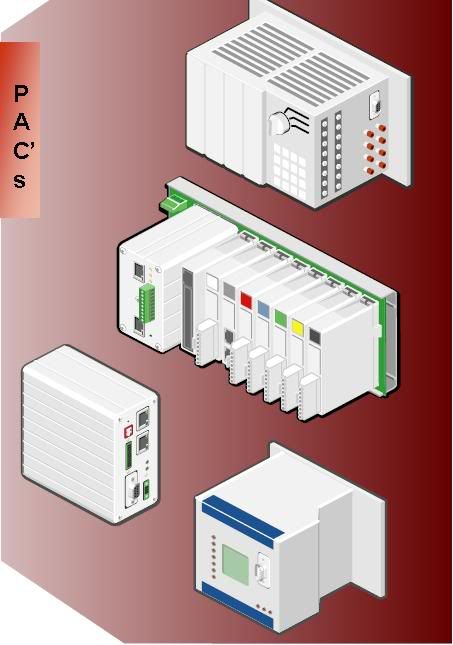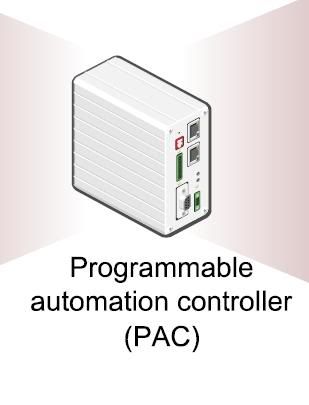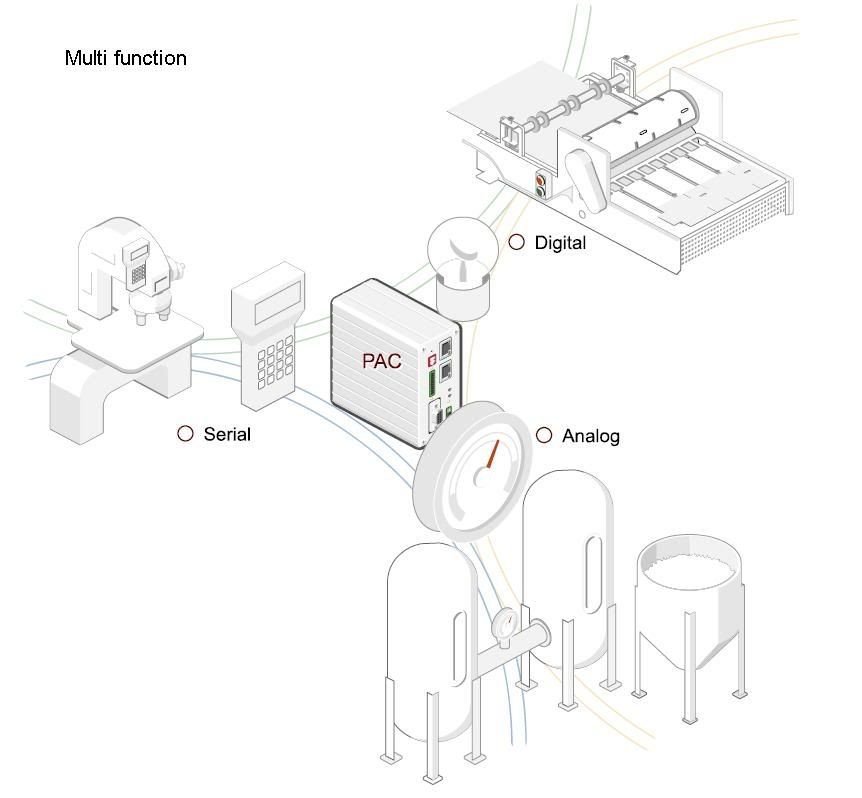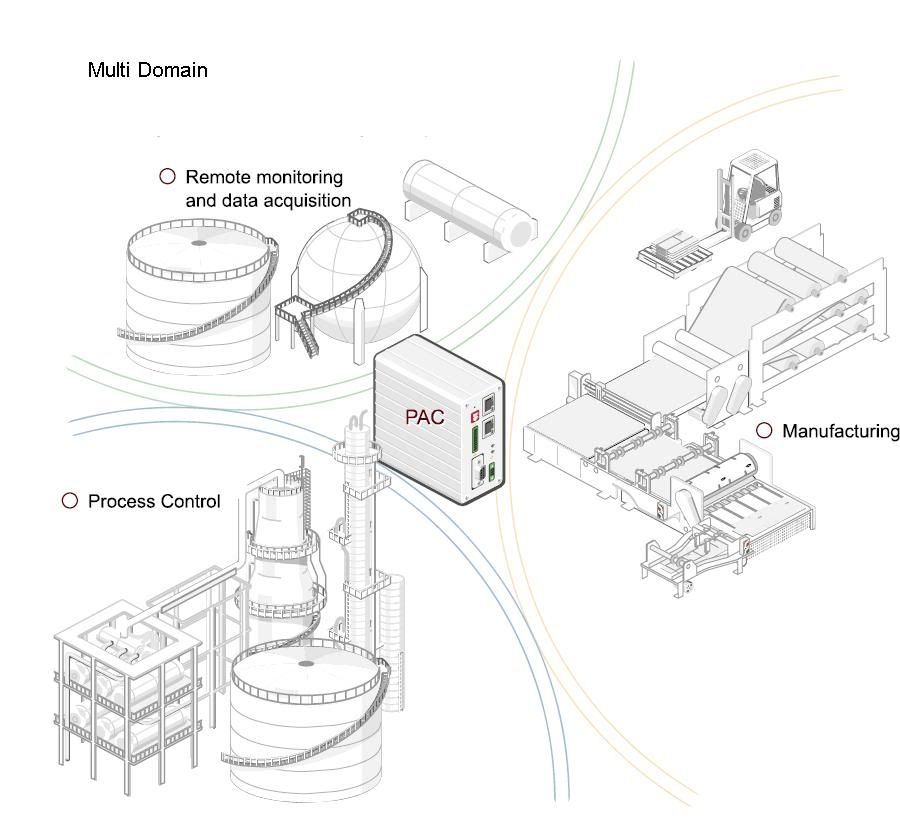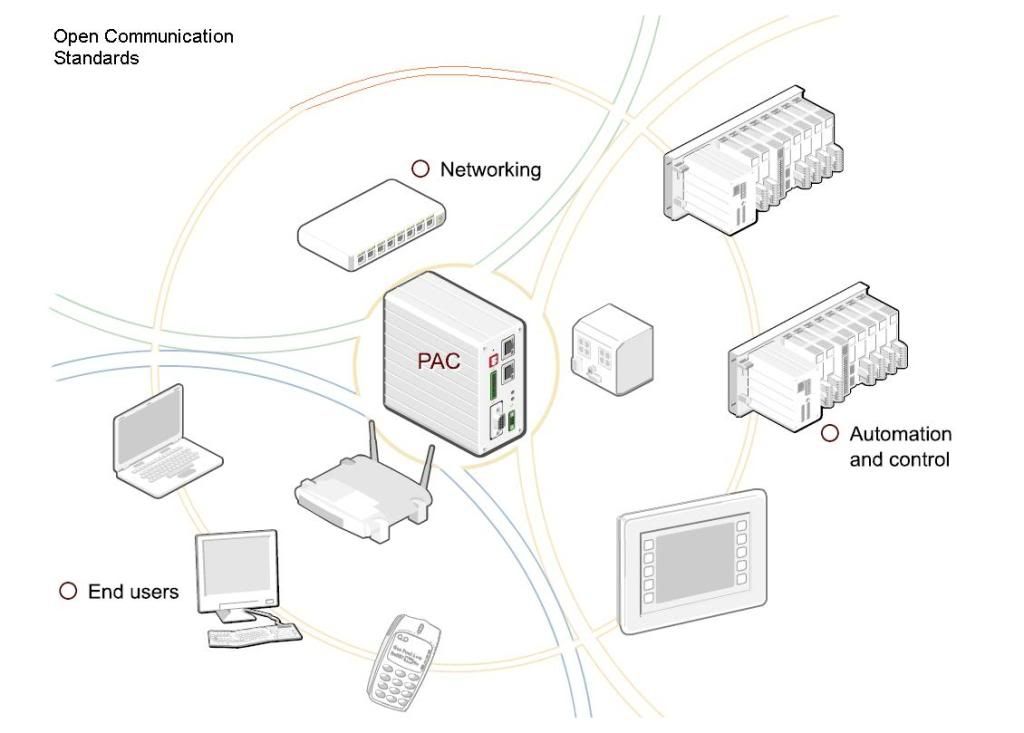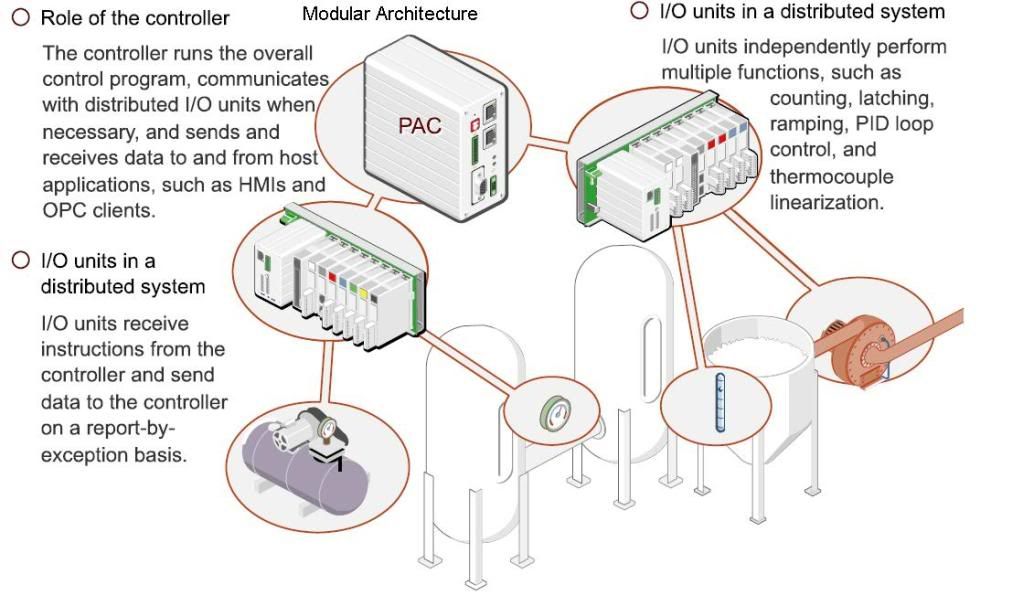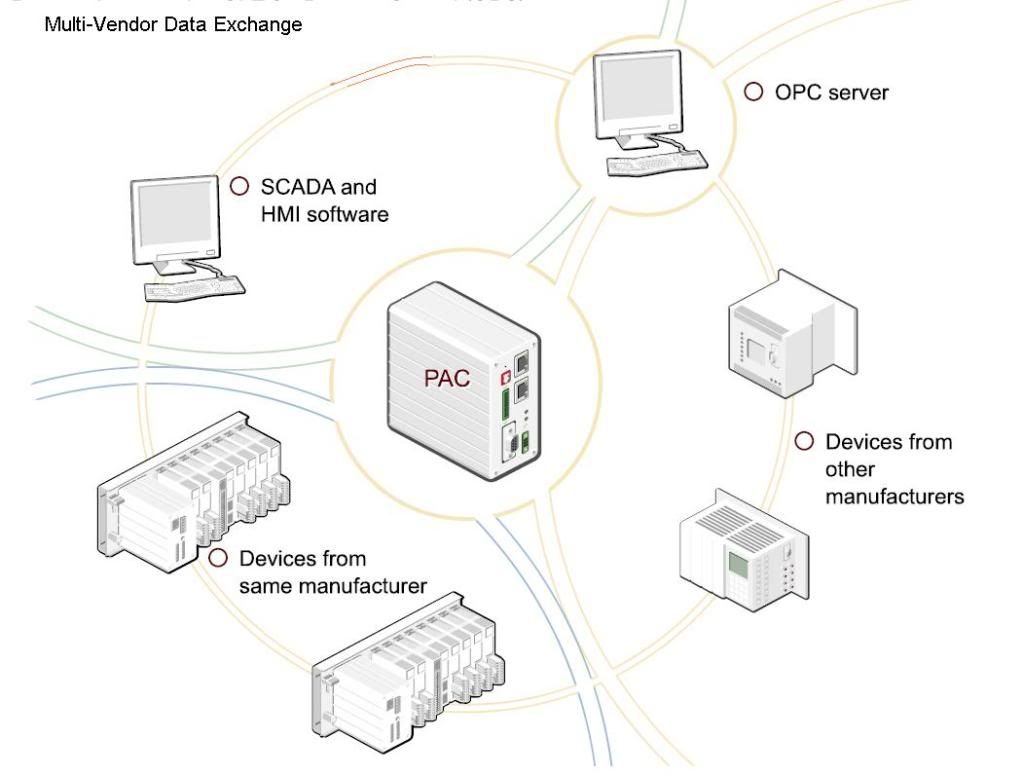What is Programmable Automation Controller? (PAC)
Ø PAC is a compact controller which combines the features of Process control, Motion Control, Data Acquisition along with PLC.
Ø Up to 2 Lakh I/O’s can be supported.
Ø Replacement of DCS (Distributed Control System), which involves huge size & complexity.
